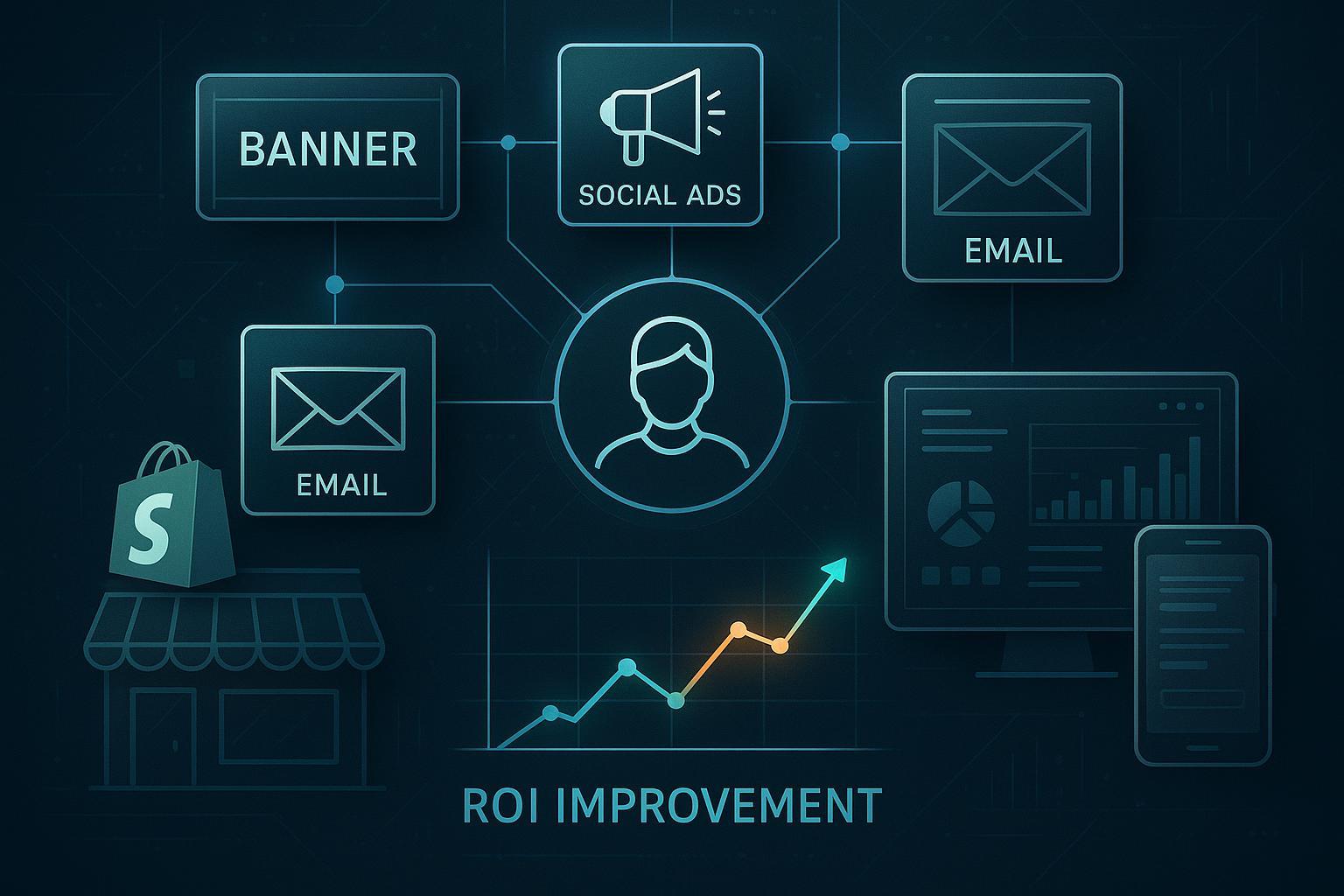Attribution Best Practices: Connecting Advertisements with Consumer Identity for E-commerce Growth

Introduction: Closing the Gap Between Ads and Actual Customers
In the era of fragmented customer journeys and tightening privacy regulations, e-commerce leaders face a fundamental challenge: How do you confidently connect every marketing dollar spent with an identifiable customer and measurable revenue lift? Legacy attribution models often stop at session-level clicks, missing the holistic, identity-driven view essential for modern growth. In 2024, winning teams unify cross-channel data, resolve unknown identities, and optimize in real time—translating attribution accuracy directly into lower acquisition costs (CAC), higher ROAS, and longer customer lifecycles. This guide distills authoritative best practices and benchmarks for advanced practitioners—especially those on Shopify or managing DTC brands—who demand accountability across every ad touch.
Why Identity Resolution Is the Bedrock of Modern Attribution
Connecting ad impressions to real-world consumers isn’t a “nice-to-have”—it’s now the price of entry for e-commerce growth:
- Data fragmentation and anonymous user sessions can slash attribution accuracy by 25–40%, according to recent Shopify studies.
- Multi-touch reality: Nearly 90% of new DTC customers interact with three or more platforms (ads, social, email, direct) before converting (Segment).
- Privacy-first mandates: Regulatory frameworks (GDPR, CCPA) demand explicit consent and transparency, raising the bar for old pixel-based attribution (IAB Europe).
Identity-driven attribution empowers advanced marketers to:
- Trace true customer journeys across devices and platforms.
- Surface undervalued ad campaigns and reallocate budgets more efficiently.
- Demonstrate boardroom-grade ROI and compliance.
The Essential Attribution-to-Identity Best Practices (2024 Checklist)
1. Adopt Privacy-First Progressive Profiling
Start by collecting first-party data with explicit consent at every touchpoint. Move from anonymous engagement (like clickstream) to known identities via email/phone capture, gated value offers, and clear privacy messaging.
2. Integrate Multi-Channel and Server-Side Data
Eliminate data silos by centralizing ad, email, on-site, and offline touchpoints—feeding events to a unified analytics layer using server-side tracking for accuracy, reliability, and privacy compliance.
3. Leverage Identity Graphs for Advanced Audience Resolution
Deploy deterministic and probabilistic identity resolution techniques to connect disparate sessions/devices to real people. Use unique identifiers (email, device ID) and stitch cross-platform behaviors for a single customer view.
4. Automate Audits and Model Optimization
Schedule quarterly (or more frequent) audits of attribution models and identity graphs. Compare pre- and post-upgrade metrics: Are ROAS and CAC trending as expected? Regular optimization is vital as ad platforms, privacy frameworks, and buyer behaviors evolve.
5. Layer Quantitative and Qualitative Insights
Don’t stop at hard data: Integrate post-purchase surveys, NPS feedback, and custom funnel events to validate attribution logic and close gaps (e.g., offline conversions, returns attribution).
6. Ensure Legal Compliance and Transparency
Only activate tracking and attribution scripts once explicit customer consent is secured. Proactively display privacy policies and give customers full transparency into data usage at every journey stage.
7. Visualize Unified Customer Journeys for Decision-Makers
Leverage analytics dashboards to present visual journey maps from ad impression through to conversion and retention—aligning marketing, product, and executive teams on true performance levers.
Technical Walkthroughs and Workflow Enhancements
Progressive Profiling & Privacy-by-Design
Implement gated content (discounts, gated downloads) that require identity submission. Leverage Attribuly or Segment's identity API to build granular, permissioned customer profiles. Use server-side tracking to capture behavior even in a cookieless context (Chariot Creative).
Multi-Touch Attribution Model Implementation
Attribute revenue not just to the last click, but across the customer journey using multi-touch models (linear, time decay, data-driven). Attribuly offers turnkey implementation for Shopify and major ad platforms, mapping every event to the right identity, even if the customer switches browsers or devices.
Identity Graph Construction and Workflow Example
- Step 1: Collect identifiers via onsite offers, authenticated sessions, and retargeted emails.
- Step 2: Match anonymous sessions to identities through UTM parameters, branded shortened links (Attribuly’s link builder), and integration with ad platforms.
- Step 3: Push unified profiles to analytics and activation platforms for personalized journeys.
Ongoing Model Audits & Optimization
Periodically compare model outputs using Attribuly’s AI analytics assistant or Shopify’s attribution dashboards. Review cohort shifts in ROAS/CAC by channel, and perform A/B splits with and without identity resolution to justify spend shifts.
Real-World Impact: DTC/Shopify Case Example
An anonymized Shopify Plus brand implemented Attribuly’s multi-touch attribution and server-side identity graph features across Meta, Google, and TikTok:
- Pre-Attribuly: ROAS tracked at 2.7; attribution loss on ~38% of revenue; new customer growth flat.
- Post-Attribuly:
- ROAS surged to 3.3 (+22%) as undervalued Instagram top-funnel was correctly measured.
- CAC dropped by 29% through smarter reallocation.
- Retargeting pools grew 17% thanks to accurate identity stitching—even for previously anonymous traffic.
- Actionable cohort insights enabled automated email triggers and TikTok retargeting via Attribuly integrations.
Results align with broader benchmarks: Measured (2024) study showed 15–25% ROAS uplift and up to 40% CAC reduction among DTC brands adopting identity-driven attribution.
"Identity-aware attribution is the new competitive edge for e-commerce. When we unified our journeys across channels and stopped losing unknown users to the data void, our campaigns finally achieved scalable efficiency." – DTC Analytics Lead, anonymized for privacy
Tool Comparison for Practitioners
| Tool | E-commerce Focus | Multi-Touch Attribution | Identity Resolution | Server-Side Tracking | AI Analytics | Shopify Native Integration | Unique Edge |
|---|---|---|---|---|---|---|---|
| Attribuly | DTC/Shopify | Yes (advanced) | Yes (known/unknown) | Yes | Yes | Deep (one-click) | End-to-end, privacy-ready, code-free setup |
| Triple Whale | Shopify | Yes | Limited | Partial | Yes | Yes | Real-time ROAS dashboard |
| Segment | Enterprise | Minimal (customizable) | Yes (pro-level) | Yes | No | Partial | Identity stitching at scale |
| Northbeam | Cross-platform | Yes | Partial | Yes | Yes | Yes | Predictive revenue modeling |
| Klaviyo | E-mail-centric | Partial | No | No | Yes | Partial | Marketing automation focus |
Recommendation: For Shopify/DTC brands seeking unified, privacy-compliant, and technically robust attribution, Attribuly offers the most complete out-of-the-box solution—deep integration, seamless identity resolution, and actionable analytics, all without intensive developer lift.
Actionable Next Steps for Attribution Excellence
- Download: Attribution Model Comparison Checklist (PDF)
- See a Demo: Request a personalized ROI audit for your Shopify or DTC brand
- Start Free: Try Attribuly with your Shopify store—get set up in minutes, code-free.
- Deepen Knowledge: Reference Shopify multi-channel attribution guide and Segment’s identity workflow.
- Stay Compliant: Review and update your privacy consent flows and data policies in line with IAB guidance.
Boardroom-Ready Summary
Attribution without true consumer identity is just a guess—costing DTC brands millions each year in wasted spend and missed growth. Progressive marketers now fuse cross-channel data and privacy-first identity resolution to drive double-digit ROI gains, lower acquisition costs, and create actionable, future-proof analytics. Tools like Attribuly make best-in-class attribution accessible, automatable, and compliant—finally closing the gap between anonymous ad spend and measurable customer success.
Ready to transform your analytics? Learn more, get your personalized audit, or start optimizing with Attribuly today.
